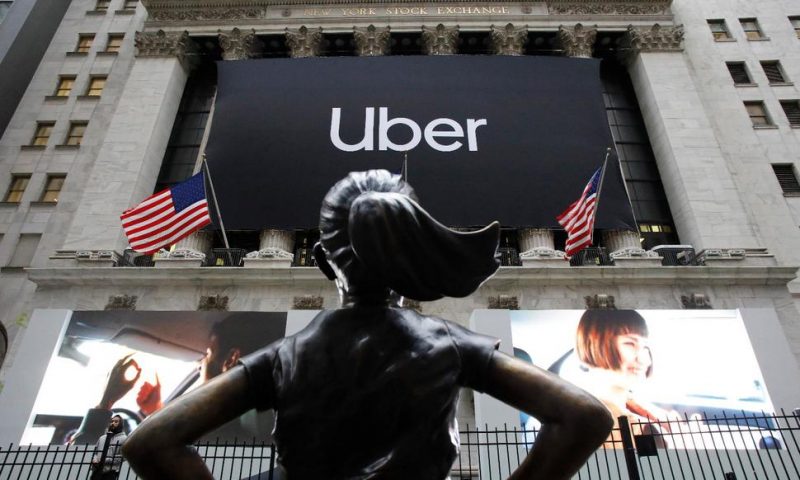Uber picked up the pace of its revenue growth in the third quarter, but the ride-hailing heavyweight continued to lose vast sums of money.
NEW YORK — The losses at Uber are mounting, but the ride-hailing heavyweight now predicts it will be profitable in about two years.
CEO Dara Khosrowshahi said Monday that the company’s goal is to reach profitability — when adjusted for interest, taxes, depreciation and amortization — for the full year of 2021.
“We hope that we’ve shown you that we can execute against not just delivering top-line growth, but also top-line growth with discipline,” Khosrowshahi said on a conference call with investors. “We can only do so with the really, really hard work of all our employees on a global basis, and also the partnership of the cities that we work with, and our drivers.”
The San Francisco company picked up the pace of its revenue growth, racking up $3.81 billion in the third quarter, 30% more than the same time last year. Last quarter, revenue had grown 14% compared to the prior year.
But Uber lost $1.16 billion in the quarter, extending its streak of losses. The third-quarter loss included $401 million in stock-based compensation related to its initial public offering.
The loss amounted to 68 cents a share and was wider than the $986 million shortfall in the same period last year.
The per-share loss in the latest quarter, however, was smaller than what Wall Street had expected. Analysts were forecasting a loss of 82 cents a share, according to FactSet.
Its revenue also topped expectations for $3.63 billion in the quarter.
Uber convinced more people to use its array of products. The number of monthly active consumers across all its platforms grew to 103 million, up 26% from the same time last year, but below the 104.4 million expected by analysts polled by FactSet.
Gross bookings grew to $16.5 billion, which was 29% more than the same time last year, but lower than the $16.7 billion expected by analysts polled by FactSet.
Last month, executives at Lyft said they expect the rival ride-hailing company to become profitable in the fourth quarter of 2021.
Khosrowshahi provided few details on how different units within Uber would change for the company to reach its new profitability target.
“While we will of course continue to invest in growth and the power of our platform, especially in some of our newer, high-potential businesses like Eats, we will continue to be thoughtful stewards of capital, make tough decisions where necessary, and make any dollar investment count,” Khosrowshahi said.
Both Uber and Lyft are facing potentially higher costs for paying drivers. In September, California passed a law requiring ride-hailing drivers to be classified as employees, which could entitle them to minimum wage, benefits and workers compensation. In response, Uber and Lyft proposed a ballot initiative aiming to exempt their companies from the new law.
“We think that there’s a better answer out there,” Khosrowshahi said. California’s new law was figured into Uber’s future profitability prediction, and Uber is already operating within similar laws in states such as Massachusetts, New Jersey and Connecticut, he said.
California represents 9% of Uber’s global rides and eats bookings, Khosrowshahi said.
In New York City, where regulations forced ride-hailing companies to increase prices, it “definitely hurt volumes in the outer boroughs where people need transportation the most,” Khosrowshahi said. But despite raising prices in some markets, frequency of use of Uber’s services is increasing, he said.
Some analysts are concerned that a deluge of Uber stock will flood the market later this week when a lockup period expires, allowing major shareholders, including company executives and investors, to sell their shares.
“There could be an avalanche of selling as insiders and early private investors head for the exits,” said Dan Ives, managing director at Wedbush Securities.
During the third quarter, Uber reorganized its financial reporting into five segments: Rides, Eats, Freight, Other Bets — which includes bikes, scooters and transit— and Advanced Technologies Group, which includes autonomous vehicles.
That increased transparency around the business units is a step in the right direction, Ives said.
Uber’s stock price, which closed Monday at $31.08, has lost nearly a third of its value since its initial public offering in May.
The stock was down about 5% in after-hours trading following the earnings report.

